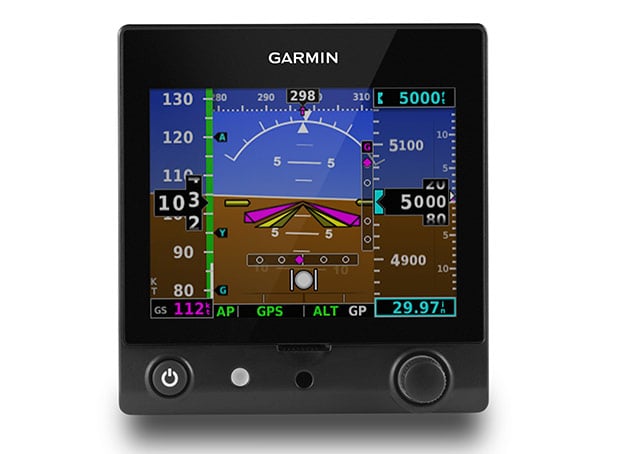Technically Advanced Aircraft
I just re-read
(j) Technically advanced airplane. Unless otherwise authorized by the Administrator, a technically advanced airplane must be equipped with an electronically advanced avionics system that includes the following installed components:
(1) An electronic Primary Flight Display (PFD) that includes, at a minimum, an airspeed indicator, turn coordinator, attitude indicator, heading indicator, altimeter, and vertical speed indicator;
(2) An electronic Multifunction Display (MFD) that includes, at a minimum, a moving map using Global Positioning System (GPS) navigation with the aircraft position displayed;
(3) A two axis autopilot integrated with the navigation and heading guidance system; and
(4) The display elements described in paragraphs (j)(1) and (2) of this section must be continuously visible.
For the Cessna 172 with a KAP 140 Autopilot, KLN 94 GPS, and a KMD 550 Multi-Function Display I think that one G5 with a magnetometer for heading would satisfy the requirement for logging time in a technically advanced airplane. You might need two G5s if the FSDO doesn’t think that one will provide the required heading info. So your cost would be in the $7-10,000 neighborhood. I think one should be fine since you have the heading info at the top of the screen. I don’t know if the GPS will send info to the G5 but I think it should.

A Rule by the Federal Aviation Administration on 06/27/2018
FAA is retaining the terms “Primary Flight Display,” “Multifunction Display,” and “advanced” in the TAA requirements. The FAA disagrees that the terms PFD and MFD will cause confusion. These terms are currently used and described in several FAA publications that are recognized by the aviation industry…
PFD is defined as “a display that provides increased situational awareness to the pilot by replacing the traditional six instruments used for instrument flight with an easy-to-scan display that provides the horizon, airspeed, altitude, vertical speed, trend, trim, and rate of turn among other key relevant indications.” MFD is defined as a “small screen (CRT or LCD) in an aircraft that can be used to display information to the pilot in numerous configurable ways. Often an MFD will be used in concert with a primary flight display.”
The FAA believes the terms PFD and MFD add clarity to the TAA requirements by describing and prioritizing the display features and elements for TAA avionics and their respective functions. For example, the term PFD is specific to the use of the primary flight controls to maintain aircraft attitude and positive control. The PFD is used by the pilot to execute appropriate use of the control stick or yoke for pitch and bank, rudder pedals for yaw, and throttle for engine power. The PFD is designed specific to controlling the aircraft attitude and altitude relative to the horizon and the surface of the earth, especially when outside visibility is poor or unavailable. The MFD has a different priority; its function is secondary to the PFD. The MFD is designed for navigational use and position awareness information, even though it may include some PFD features for redundancy. Furthermore, the FAA is requiring certain minimum display elements for both a PFD and MFD, respectively, thereby clarifying what will be considered a PFD or MFD…
Section 61.129(j)(2) requires only the minimum elements of a MFD; it does not preclude the use of a split-screen display or two independent screens contained within a single physical unit. Therefore, a manufacturer may use a split-screen display or two independent screens for the PFD and MFD provided the displays contain the minimum elements required for each…
FAA is clarifying the MFD requirements by first describing what the display shows (i.e., a moving map) and then describing how the display is facilitated (i.e., using GPS navigation). Accordingly, § 61.129(j)(2) now requires the MFD to include, at a minimum, a moving map using GPS navigation. The FAA believes this revision to the proposed language clarifies that a system with a moving map display common to GPS/WAAS navigators would satisfy the MFD requirement. Additionally, the FAA is requiring the aircraft position to be displayed on the moving map…
FAA removing the phrase “independent additional” from the proposed language to allow a single piece of equipment or single display to satisfy the requirement for both a PFD and MFD. However, to ensure that both displays are visible at the same time, the FAA is requiring the display elements for both the PFD and MFD (paragraphs (j)(1) and (2)) to be continuously visible…
FAA did not intend to exclude systems that provide autopilot functions separate from the MFD. The FAA is therefore separating the “two-axis autopilot” requirement from the MFD requirement. Accordingly, under new § 61.129(j)(3), the two axis autopilot is no longer required to be included as part of the MFD. This change from what was proposed allows the use of independent/aftermarket autopilot systems…
The TAA requirements in no way restrict the use of peripheral or supporting equipment that enables the display functionality described for the PFD and MFD in the TAA requirements…
While there may be different TSOs for the various functions of GPS, moving map, and navigation resulting in separate pieces of underlying equipment, this equipment can support the MFD requirements so long as the MFD includes a moving map that uses GPS navigation with the aircraft position displayed…
The TAA requirements of § 61.129(j) do not require the autopilot to have GPSS. However, § 61.129(j) specifies only the minimum requirements for a TAA. Therefore, an autopilot may have additional features, including GPSS. The “two axis” requirement refers to the lateral and longitudinal axes. The autopilot at a minimum must be able to track a predetermined GPS course or heading selection, and also be able to hold a selected altitude. The autopilot is not, however, required to control vertical navigation other than holding a selected altitude…


